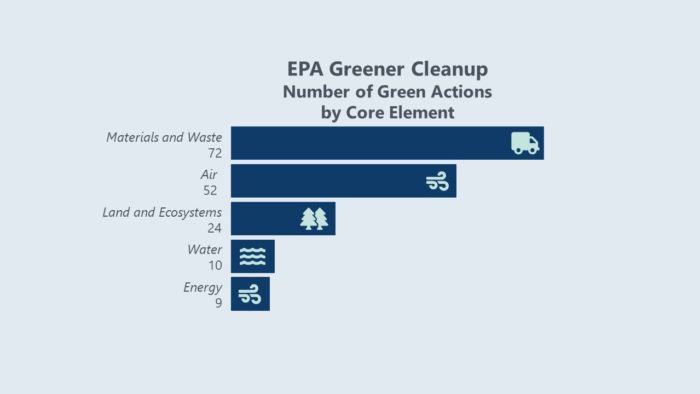Creating a greener cleanup
Central to the remedial effort is our focus on sustainability. Our team integrates the five core elements of EPA’s Greener Cleanup program in each aspect of the project and focuses on the community impact through outreach and learning. To date, we have implemented more than 172 sustainable actions and 42 ASTM Best Management Practices for Greener Cleanups. For example, the groundwater treatment building is heated by a geothermal system using extracted groundwater and treated groundwater is used for dust suppression during construction. Reuse of water during thermal operations for steam generation reduced greenhouse gas emissions by approximately 65.4 metric tons. As much as possible, materials are reused across the site and sometimes repurposed for habitat enhancement. Remote technology reduces the number of site visits and solar panels power remote monitoring stations, further mitigating greenhouse gas emissions.

Wildlife habitat restoration and enhancement
During our time onsite, the project team encountered various wildlife species around the property. The Beede Site Wildlife Management Team was formed in 2014 to promote wildlife habitat elements alongside efforts to clean and restore natural attributes, resulting in the site’s conservation certification by the Wildlife Habitat Council in 2015. Collective efforts have included the addition of duck boxes along Kelly Brook, installation of insect hives designed for native pollinators, expansion of the turtle observation program, development of an invasive vegetative species identification and removal program, and the addition of game cameras. Shortly after three game cameras were installed, each began capturing footage of deer, bobcat, coyote, turkeys, and many other native wildlife, helping demonstrate the land’s value for wildlife habitat.
Connecting with community
Since residents of Plaistow rely on private drinking water wells, restoring the land and aquifers is extremely important to the community. The Beede Site Group, with the support of our project team, maintains a public website and Facebook page to keep neighbors up to date on the remediation progress. The project team hosts an annual open house, with supplemental virtual lunch and learn sessions during the pandemic. The community is involved in an annual bat count and a local high school STEM program has engaged with some habitat restoration work. Future engineers and scientists studying at the University of New Hampshire have toured the groundwater treatment plant. The project team also prioritizes local businesses to subcontract work to when possible. This has garnered mutual support from town officials and residents as cleanup work continues for at least the next decade.


